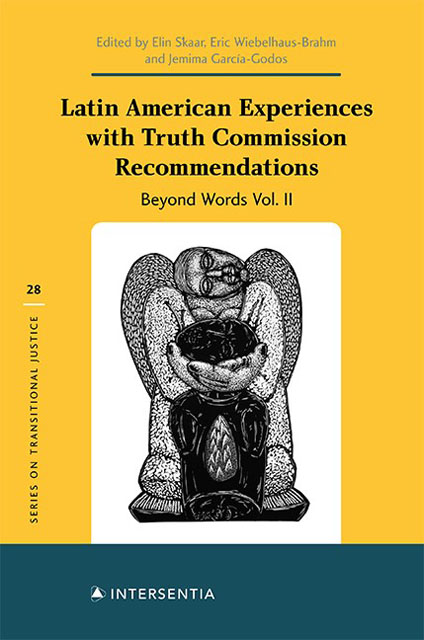Guatemala’s Commission of Historical Clarification: The Memory of Silence or the Silence of Memory?
Published online by Cambridge University Press: 19 November 2022
Summary
INTRODUCTION
The negotiation of peace agreements in Guatemala marked the end of a bloody war that lasted more than three decades (1960 – 1999). Truth commissions have been established as a key mechanism to promote transitional justice in such contexts of political transition. The documentation, analysis, and explanation of the structural factors that caused the violence in Guatemala were undertaken by the Commission for Historical Clarification of Guatemala (Comisión para el Esclarecimiento Histórico de Guatemala, hereafter the CEH or the Commission). The Commission concluded its work in 1999 with the publication of its final Report entitled Guatemala: Memoria del Silencio (“Guatemala: The Memory of Silence”). The Report included the CEH's recommendations for restructuring the systemic defects which had allowed past human rights violations to take place. As this chapter shows, civil society organizations, rather than the Guatemalan State, have been the main political drivers for the implementation of the Commission's recommendations.
This chapter examines the fate of the CEH's 84 recommendations. The next section provides a brief overview of Guatemala's recent history. Section 3 provides a general summary of the establishment of the CEH and its recommendations. The main section, section 4, studies the relative progress toward implementation of these recommendations. The chapter concludes by briefly analyzing the role of each of the main actors in this process.
HISTORICAL BACKGROUND
The history of Guatemala is characterized by the virtual absence of civilian governments. From its independence from Spain in 1821 until 1996, the country has experienced a number of dictatorships and coups d’état (Blanco and Zapata 2007, 292 – 338). Following the dictatorships of the first half of the twentieThcentury, the “October Revolution” ended with Juan José Arévalo as President. He initiated reformist policies that were continued by his successor Jacobo Arbenz, when he achieved his electoral victory in 1950. The agrarian reform implemented by Arbenz adversely aff ected the interests of the Guatemalan elite and the United States government. Consequently, Arbenz was forced to resign on June 27, 1954. From then until 1986 (except for the period between 1966 and 1970, when the civilian government of Julio César Méndez Montenegro ruled), the history of Guatemala features the prohibition of social democratic, socialist and communist parties, and frequent coups d’ état (Poitevin 2004, 18).
- Type
- Chapter
- Information
- Latin American Experiences with Truth Commission Recommendations: Beyond Words Vol. II , pp. 373 - 408Publisher: IntersentiaPrint publication year: 2022



